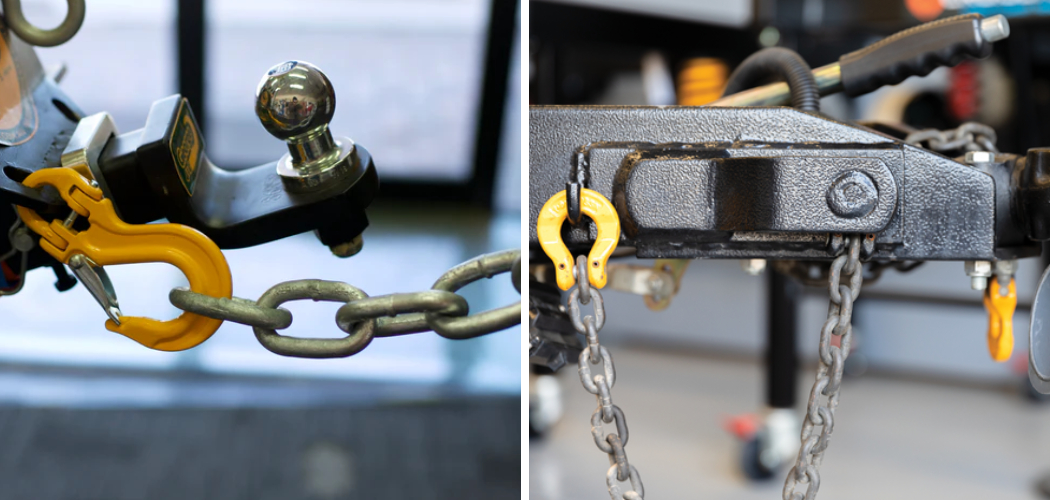Attaching safety chains to a trailer is a critical step in ensuring safe towing and preventing accidents. Safety chains serve as a vital backup connection between your vehicle and trailer, providing an added layer of security in case the hitch fails. Properly attaching these chains can prevent the trailer from detaching completely, potentially causing dangerous situations on the road. Understanding the correct way to attach safety chains involves more than just hooking them up; it requires knowledge of the correct crossing technique, ensuring appropriate slack, and choosing chains with the right weight rating for your trailer.
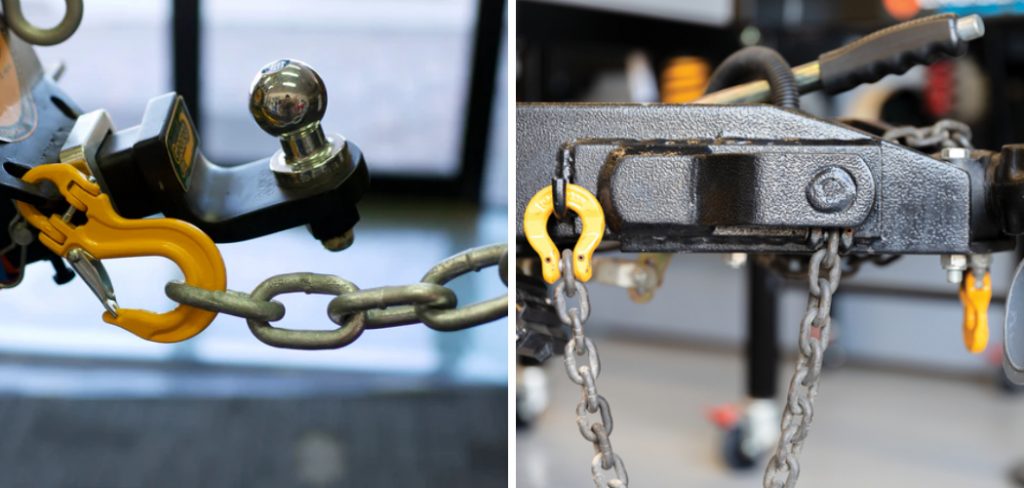
This comprehensive guide will walk you through the process of how to attach safety chains to trailer step-by-step, emphasizing the importance of safety, compliance with legal requirements, and best practices for secure towing. By following these guidelines, you can ensure a safe and reliable towing experience, protecting yourself, your cargo, and others on the road.
Understanding Safety Chains
Safety chains are not just an optional accessory for towing—they are a critical component that enhances the overall safety of your towing setup. Designed to act as a fail-safe, safety chains connect your trailer to your tow vehicle, ensuring that the trailer remains attached even if the primary hitch connection falters. The strength and quality of your safety chains are paramount; they must be robust enough to handle the weight of your trailer and its contents.
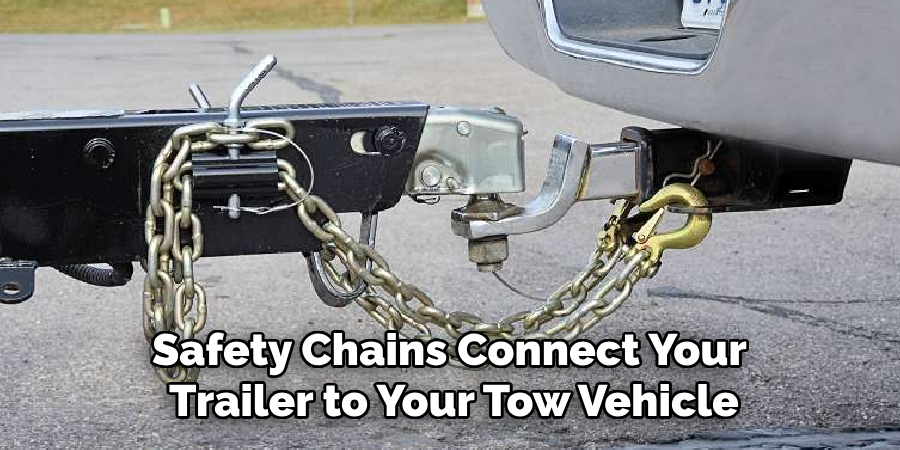
Each set of chains comes with a weight rating indicating the maximum load they can support, and it’s vital to select chains that match or exceed the gross trailer weight rating. Additionally, the chains should be made from durable materials that can withstand the stresses and strains of towing under various conditions. Understanding these fundamentals about safety chains will prepare you for the practical steps involved in attaching them correctly, ensuring that your towing experience is as safe as possible.
10 Methods How to Attach Safety Chains to Trailer
1. Understanding the Importance of Safety Chains
Before diving into the specific methods, it’s important to understand why safety chains are essential. Safety chains provide a backup connection between the trailer and the towing vehicle. In the event of a hitch failure, these chains prevent the trailer from completely detaching, which could lead to dangerous situations on the road. Safety chains help control the trailer, keeping it close to the towing vehicle and allowing the driver to safely bring both vehicles to a stop. Therefore, attaching safety chains correctly is not just a legal requirement but a critical safety measure.
2. Choosing the Right Chains
The first step in attaching safety chains is selecting the appropriate chains for your trailer. Safety chains are rated by their weight capacity, which should match or exceed the gross trailer weight (GTW). Using chains with an insufficient weight rating can result in failure during an emergency. Additionally, choose chains made of high-quality materials such as galvanized steel or stainless steel to resist corrosion and wear. The length of the chains is also important; they should be long enough to allow for turning but short enough to prevent the trailer from hitting the ground if it detaches.
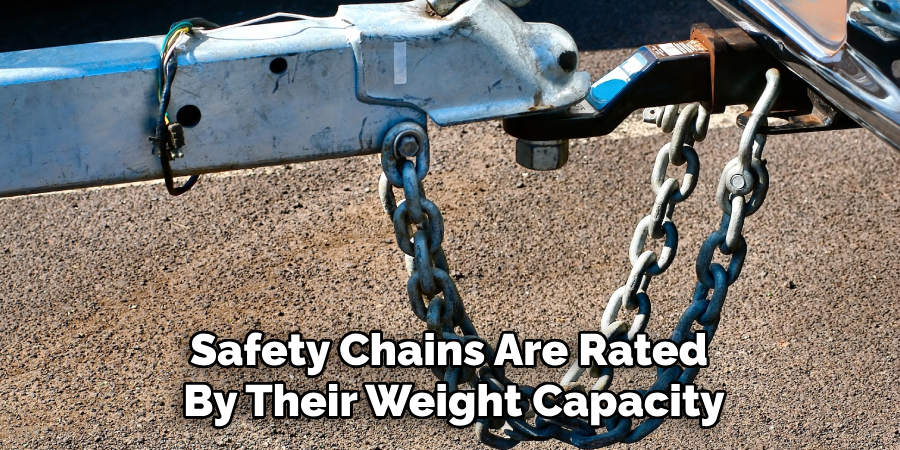
3. Positioning the Chains
Proper positioning of the safety chains is crucial for effective performance. The chains should be attached to the trailer’s tongue near the coupler and to the towing vehicle’s hitch. Ensure the chains are crossed under the trailer tongue to form an “X” pattern. This crossing method creates a cradle effect, supporting the trailer tongue and preventing it from hitting the ground if it detaches. It also helps maintain the alignment of the trailer with the towing vehicle, providing better control in an emergency.
4. Using S-Hooks or Quick Links
Attaching safety chains to the trailer and towing vehicle can be done using S-hooks or quick links. S-hooks are simple and easy to use but can sometimes come loose. To prevent this, use hooks with safety latches or secure the hooks with heavy-duty zip ties. Quick links, on the other hand, provide a more secure connection. These links screw closed, ensuring that the chains remain attached even under strain. When using S-hooks or quick links, ensure they are rated for the weight of your trailer and are properly closed to prevent accidental disconnection.
5. Adjusting Chain Length
The length of the safety chains is critical for safe towing. Chains that are too long may drag on the ground, causing wear and potential failure, while chains that are too short can restrict turning and cause binding. To adjust the chain length, attach the chains to the trailer and towing vehicle, then ensure there is enough slack for turning without the chains touching the ground. If necessary, use a chain shortening device or wrap the excess chain around the trailer tongue to achieve the proper length. Regularly check and adjust the chain length to account for any changes in trailer height or hitch setup.
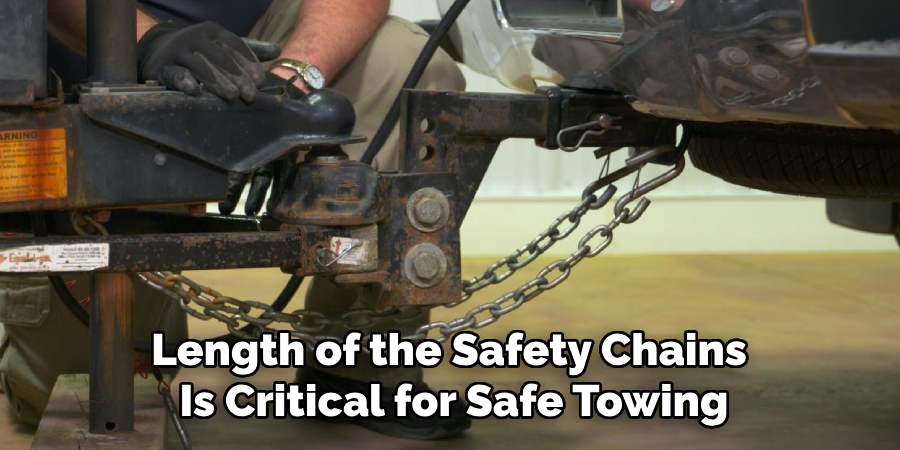
6. Checking for Proper Tension
Proper tension in the safety chains is essential for effective performance. The chains should be taut enough to provide immediate support in case of hitch failure but not so tight that they restrict movement. To check the tension, attach the chains and simulate turning and braking movements. The chains should remain off the ground and provide a slight resistance without causing binding. If the chains are too loose, they may drag or become entangled; if too tight, they can restrict movement and cause damage. Adjust the chains as necessary to achieve the right balance of tension and flexibility.
7. Using Dual Chains for Added Security
For increased safety, consider using dual chains instead of a single chain. Dual chains provide redundancy, ensuring that if one chain fails, the other can still maintain the connection. Attach two chains to the trailer’s tongue and cross them under the tongue to the towing vehicle’s hitch. This method not only provides additional security but also improves the cradle effect, offering better control in the event of a hitch failure. Ensure both chains are of equal length and properly rated for the trailer’s weight to distribute the load evenly.
8. Regular Maintenance and Inspection
Regular maintenance and inspection of the safety chains are essential for long-term safety. Before each trip, inspect the chains for signs of wear, corrosion, or damage. Check the hooks or quick links for secure closure and ensure the chains are properly attached and adjusted. Over time, chains can become weakened by exposure to the elements, especially if they are not made of corrosion-resistant materials. Replace any chains that show signs of significant wear or damage to maintain the integrity of the towing setup. Regular maintenance ensures that the safety chains are always ready to perform effectively in an emergency.
9. Proper Storage When Not in Use
When the trailer is not in use, proper storage of the safety chains can extend their lifespan and maintain their effectiveness. Store the chains in a dry, clean environment to prevent corrosion and damage. Avoid leaving the chains on the ground or exposed to the elements, as this can lead to rust and weakening. If the chains are detachable, remove them and store them in a dedicated storage bag or box. Regularly clean the chains and lubricate any moving parts, such as quick links or hooks, to ensure smooth operation. Proper storage and care help maintain the reliability of the safety chains for future use.
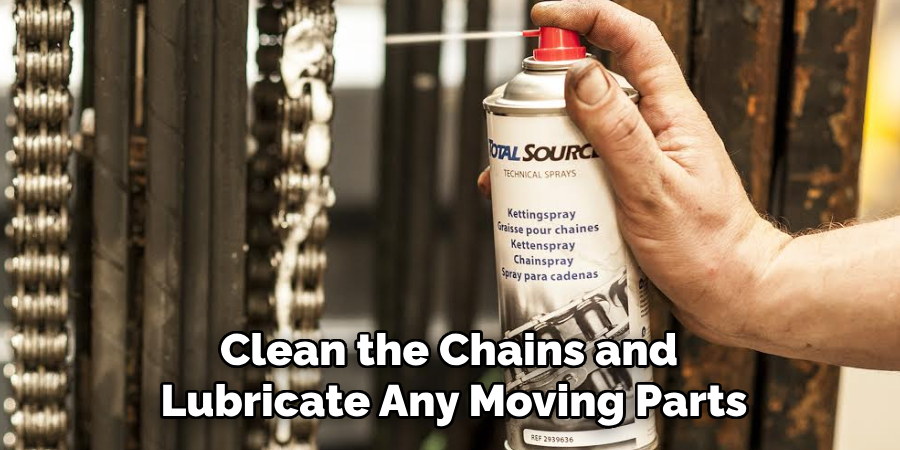
10. Understanding Legal Requirements
Finally, understanding and complying with legal requirements for safety chains is crucial. Different regions may have specific laws regarding the use of safety chains, including weight ratings, attachment methods, and inspection requirements. Familiarize yourself with the regulations in your area to ensure compliance and avoid penalties. Legal requirements are in place to promote safety and reduce the risk of accidents caused by trailer detachment. By adhering to these regulations, you not only enhance your safety but also contribute to safer roads for all users.
Conclusion
In conclusion, attaching safety chains to a trailer is a multi-faceted process that requires attention to detail and adherence to best practices. By understanding the importance of safety chains, choosing the right materials, properly positioning and adjusting the chains, and regularly maintaining them, you can ensure a secure towing experience. Whether using S-hooks, quick links, or dual chains, each method has its benefits and should be chosen based on your specific needs and trailer setup.
Proper storage and compliance with legal requirements further enhance the effectiveness of safety chains, providing peace of mind and safety on the road. Now that you know how to attach safety chains to trailer. While it does take a few steps each time, hopefully now you understand the process and why it’s worth taking the extra step to make sure your floor is properly cared for. So don’t wait any longer, take action today!

